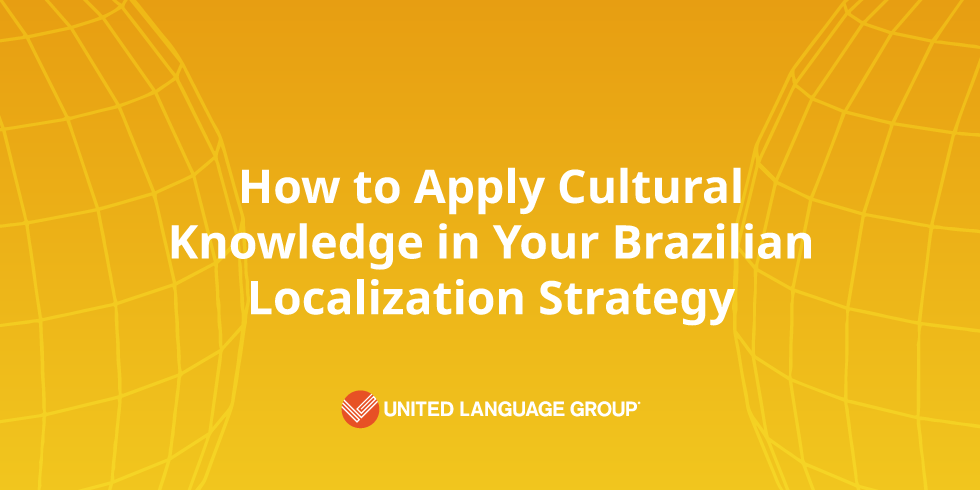Brazil's economy is set to grow by 1.7% in 2024, backed by a massive consumer base of over 214 million people. For brands looking to tap into this potential, success hinges on more than just speaking Portuguese—it requires deep knowledge of cultural nuances. Here is the essential cultural knowledge you need to set your brand apart and drive real success in the Brazilian market.
Mapping Brazilian Culture with Hofstede’s Dimensions
Defining and understanding another culture can be challenging, given the subtle yet significant variations in beliefs, motivations, social behaviors, and norms. Like an iceberg, many of these factors lie beneath the surface and aren’t readily perceived, but they drive consumer behavior powerfully, nonetheless.
Hofstede's Cultural Dimensions, including power distance, individualism versus collectivism, and uncertainty avoidance, offer a straightforward tool to tackle this challenge. By using these dimensions, businesses can uncover the key values that shape Brazilian society, helping them craft communication strategies that resonate well and build genuine connections in the local market.
Deciphering Brazil's Cultural Dimensions for Effective Localization
In Brazil, where regional diversity significantly influences consumer behavior, effective localization is crucial for building trust and establishing a strong market presence. Localization involves adapting your brand to align with key cultural elements so that your message is relevant and respectful to local audiences. Let’s explore how these foundational traits can shape your localization strategy and deepen your connection with Brazilian consumers. Here are the dimensions and their practical impacts on your marketing efforts:
High Power Distance
Brazil places a strong emphasis on hierarchy, where authority is respected and differences in wealth, class and age matter significantly. In Brazilian business etiquette, the boss reigns supreme. In families, the elderly are respected, and children are expected to take care of their elderly parents.
Your content should mirror this respect for authority to align with societal norms and local expectations. For example, use endorsements from authority figures to build credibility.
Collectivist
Community and family ties are central in Brazil, where group identity often trumps individual achievement. Lasting relationships are highly valued in both family life and business.
To take advantage of this dimension, promote the idea of loyalty and collective benefits in your marketing. For example, a team image would be more powerful and socially relevant than that of an individual worker.
Balancing Cooperation and Competition
Brazil values a balance between competitive success and communal happiness. For example, there’s an emphasis on achievement, competition, and success but also on “quality of life” values, like happiness, teamwork, harmony, and empathy.
To tap into this, highlight the competitive edge of your products while underscoring how they contribute to the collective well-being and happiness, creating a sense of achievement that benefits the whole group. For example, focusing on a team working together to win a game will be more impactful than focusing on a single athlete’s achievements.
High Uncertainty Avoidance
Brazilians prefer well-defined situations since they dislike ambiguity. This shows up in its highly structured system of laws and regulations.
To align with this aspect of Brazilian culture, your product instructions, service terms, and user guides should be explicit and detailed. This clarity helps build trust and comfort, aligning with the local preference for structured and predictable interactions. For example, highlighting a “free returns” policy in your marketing creates clear expectations about their options if the purchase doesn’t work out.
Intermediate Long-Term Orientation
Brazilians meld a respect for traditional practices with openness to new ideas. They can be suspicious of change, but they also understand that the world is constantly evolving and demonstrate a willingness to adopt new technologies. For example, Brazil is the fifth largest digital population in the world, and the number of Internet users there is growing.
To harness this cultural dimension, market new products by connecting them to familiar concepts, yet emphasize how they're adapted for the future. This respects tradition while appealing to progressive attitudes, encouraging easier adoption.
For example, Deezer successfully launched a new music streaming platform in Brazil by focusing on music from familiar local artists.
High Indulgence
Despite recent economic fluctuations, Brazilians value enjoyment and living life to the fullest. Position your products as enablers of joy and relaxation. Highlight how they can enhance leisure and celebration, tapping into this spirit of indulgence and enjoyment. For example, your software product helps them save time and balance work/life, rather than greatly increasing your productivity so you can hustle harder.
Six Tips for Engaging the Brazilian Market
Now that you have a better understanding of the Brazil’s cultural dimensions, you can apply the cultural elements that drive consumer behavior and better position your product or service.
Yet there is more to growing your market share than just localizing content. Here are six recommendations to consider:
- Be willing to engage in social conversations. Because relationships are so foundational to Brazilian culture, it’s important to put extra effort into building those relationships with Brazilian consumers. If your target audience is on social media, this is an excellent place to start—43% of Brazilian social media users use these platforms to find products to purchase.
- Connect with local influencers. If you’re new to Brazil, consider piggybacking on social media influencers’ relationships with their audiences. 73% of Brazilian consumers have made purchases based on influencer recommendations.
- Use professional Brazilian Portuguese translation services. In Brazil, Portuguese translation alone isn’t enough to connect with consumers, but it’s a necessary first step. In fact, according to Common Sense Advisory, 57% of Brazilian consumers are more likely to make a purchase when the shopping experience is in Portuguese! Brazilian Portuguese (as opposed to European or African Portuguese) is a must to make your content feel native. A knowledgeable language solutions provider can also advise on which, if any, regional dialects to use.
- Offer a generous return policy. Brazilians' high uncertainty avoidance means they expect a generous return policy, with the option to cancel within seven days of purchase.
- Offer culturally appropriate payment methods. Brazilians are used to having the opportunity to pay in installments, and research shows that deferred payment options (like invoicing, cash on delivery and installments) are preferred in countries with higher collectivism and uncertainty avoidance scores.
- Build community. Encourage a sense of community in your campaigns, as Adidas did when it asked Brazilians to vote on the name of the official World Cup soccer ball in 2014.
Two Brazilian Localization Success Stories and One Failure
McDonald’s has thrived in Brazil by spicing up their menu with local favorites like the McFeijoada burger and pão de queijo. McDonald’s was aware of Brazil’s high uncertainty avoidance, reflected in their preference for familiar tastes, and added these items to the menu. Also, partnering with beloved cultural events and the national football team, McDonald’s tapped into the collectivist nature of Brazilians, boosting their brand through shared national pride.
Adidas captured the hearts of Brazilian consumers with their All in or Nothing campaign during the 2014 FIFA World Cup. They engaged fans by letting them name the official World Cup ball, Brazuca, fostering a strong community connection and leveraging Brazilians’ collectivist nature.
Walmart, on the other hand, failed in Brazil because they did not understand the local market. Despite rapid expansion, Walmart struggled with poorly located stores and failed to adapt to the unique shopping habits of Brazilians, who prefer shopping at multiple locations for the best deals. Coupled with uncompetitive pricing and a lack of compelling promotions, Walmart couldn’t resonate with the price-sensitive Brazilian consumers, ultimately leading to their retreat from the market.
Set Your Business Up for Success in Brazil with Localized Portuguese Language Solutions
If you’re ready to step into the Brazilian market, our team is available to help you make your mark. Reach out to our team of experts and let us help you tailor your approach to resonate with Brazilian consumers. Contact us today to get started!


